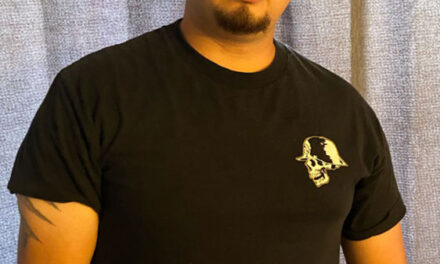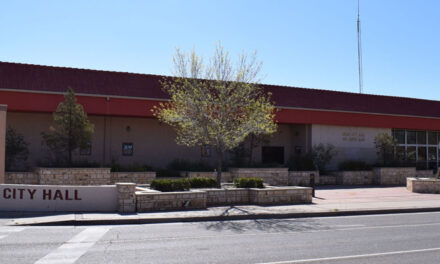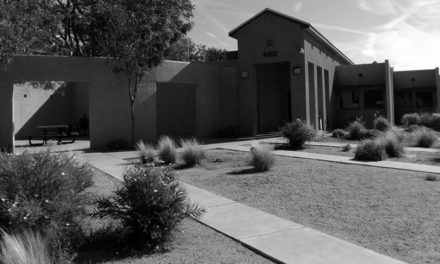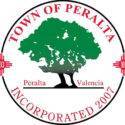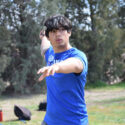The start of a new school year is never easy, but this fall has been a moving target for educators across the country, state and throughout Valencia County.
Most districts have spent the last month working on a hybrid plan that would allow 50 percent of students to be on campus at a time while the other half would participate in remote learning from home.
However, on July 23, Gov. Michelle Lujan Grisham announced in-person learning for public schools will be delayed until at least after Labor Day.
Districts throughout the state were forced to close school sites and teachers conducted classes virtually in March because of the COVID-19 pandemic.
Schools can begin classes in August via virtual and distance learning, and when in-person learning resumes, it will be a hybrid model with students phased in starting with kindergarten through fifth grade.
Belen Consolidated Schools
With the pivot from the hybrid model to 100 percent remote learning, the district is proposing to push back the start of school to Monday, Aug. 31, to better prepare. The Belen Board of Education will consider the new start date at its Aug. 11 meeting.
Belen Consolidated Schools Superintendent Diane Vallejos said the district has ordered cameras for every teacher in the district, who will be teaching lessons from their classrooms while students watch from another location.
“These cameras are small but very powerful. The microphone will pick up your voice from across the room and they have a wider angle than a camera on a laptop,” Vallejos said.
Students can watch the lessons live or at a later time, she said, since the classes will be recorded and uploaded to the district’s website.
“It’s going to take some time to get all this set up so that’s why we asked for extra time,” she said.
In terms of devices for students, Vallejos said high school seniors would take priority, as well as students who don’t have access to a laptop or tablet.
When instruction moved to remote learning last spring, BCS found about 15 percent of the more than 3,000 students in the district didn’t have devices at home and/or access to high-speed internet.
Vallejos was frank with board members, saying the district simply didn’t have the funding available to provide devices for every student.
“Some of our students and families already have their own devices. We will push ours out and prioritize those with nothing,” Vallejos said. “There are districts out there that have nine times the funding for technology than we have, and we’re expected to keep up with them. There’s only so much we can do with what we have.
“Other districts have funding sources that they’ve had in place for 10, 15 years, that we don’t have,” the superintendent said. “That still doesn’t address the problem that we, as a state, don’t have enough broadband access. We have students who cannot connect no matter what device they have.”
To try to fill those gaps, wireless access at every school site has been “amplified,” she said, to give the signal as much reach as possible, but students will still need to be very close to the school to access the signal.
To address the needs of students who can’t get internet service at home, Vallejos said the district is looking at ways to let them bring their devices to a school site and have lessons and materials uploaded or creating small learning pods for some students.
“We might be able to bring some of our high school students into a school and take classes in their computer labs, for instance,” she said. “We will have to find a way to get them connected because teachers must contact students twice a week, regardless of the model.”
During remote learning, special education services will continue, using strategies and online platforms based on individual students’ needs. Special education staff will collaborate with families to determine what services are needed during remote learning.
Staff will also collaborate regularly with general education teachers so students can access the general education curriculum with the modifications and accommodations found in their Individual Education Plan.
Los Lunas Schools
The Los Lunas school district boasts about 8,200 students in total, and they will have the advantage of technology as they begin classes next month. Every elementary and middle school student will be provided an iPad, and every high school student will received a MacBook.
“We are going to try to do school as normally as we can as if the students were there,” said Los Lunas Schools Acting Superintendent Walt Gibson Tuesday in a phone interview. “Right now, we’re ready to go remote. Our plan is for the staff to come back on Aug. 3.”
During the two-week period from Aug. 3 to 14, staff will be focusing on ways to deliver the curriculum to students and tools for parents. Students will begin classes on Monday, Aug. 17.
“Parents need to know how to access our learning management system, Canvas; they need to know how to access the learning materials that we’ll be using,” Gibson said. “We’ll be providing tutelage so that they can monitor their student’s learning.”
During Thursday evening’s special meeting that followed the governor’s address earlier that day, Gibson explained how Los Lunas Schools will be pivoting to virtual learning until Sept. 8.
“We are very well positioned for remote learning. We will have devices in the hands of all our students, K through 12, by the time we begin remote learning,” Gibson said during the meeting.
The learning curriculum will be available five days a week for students, for about 5 1/2 hours a day by their teachers.
Schedules will be posted for elementary, middle and high school level remote learning this week. Core subjects will be scheduled at a certain time at all grade levels so students and families can log on during that time.
“They will also have the option of logging on asynchronously if a parent or family wants to supervise their student’s learning, they can log onto our website to see the videos created for each lesson,” Gibson said.
Staff members will work in teams to deliver virtual learning. There will be teachers who deliver the lesson, other teachers who monitor the chat room and answer questions, teachers who will provide the activities that go along with lessons and teachers who will be available to help students.
“You can be sure we’ll be delivering a quality program. We will do it for the recommended period of time from the Public Education Department. We will do what is necessary to help our kids,” Gibson said.
According to the press conference held by Lujan Grisham, the tentative schedule for students to return to school in a hybrid schedule is Sept. 8 for elementary students, Sept. 21 for middle school students and Oct. 5 for high school students.
Teachers will have the option to teach from their classroom or teach from their home.
“If teachers want to teach from their classroom, we will certainly allow that.,” Gibson said. “We will be social distancing and taking temperatures. All we’re asking is that all teachers teach one day a week from their classroom. That way if they’re a parent, they only have to arrange for childcare once a week.”
Parents and students who are uncomfortable with on-campus attendance may continue with full-time remote learning once the district goes to the hybrid model.
School of Dreams Academy
The county’s only charter school will be ready to go with remote learning on Monday, Aug. 3, for all its 500-plus students, Pre-K through 12th grade.
“This is our recommendation for at least the first nine weeks, then we can assess the current health situation and make a recommendation moving forward,” School of Dreams Academy Superintendent Mike Ogas told the school’s governing council last week.
During the summer break, the school has improved it’s virtual teaching capabilities, he said, by equipping every teacher with a virtual teaching lab.
“They will be able to live-stream whether they are teaching from a classroom or home. All students will have access to live teaching. Those sessions will be recorded and put into the Google Classroom cloud so families and students can revisit them if they want to.”
Ogas said every student would be issued a Chromebook with it’s own unique ID that will allow students to access lessons and materials on the SODA website.
As opposed to the spring when the state Public Education Department told schools to offer a minimum amount of instruction to finish out the year, this fall SODA would be on a schedule akin to a “normal” school day for all students at all grade levels.
“We want to create something that is as norm as possible with class schedules, so when students transition back to in-person learning, those schedules are still in place,” he said.
When schools are allowed to move to a hybrid model, Ogas said teachers will continue to live-stream instruction from the classroom for students learning remotely.
The school is also equipping two recording studios and asking teachers to create three to seven minute tutorials specific to assignments students are working on, he said.
“If you are familiar with Khan Academy, it will be similar to that,” Ogas said. “These will help reinforce the skills being taught.”
As remote learning begins, the superintendent said he and the staff of SODA more than welcome feedback from students and parents.
“As we implement this, if you have an opinion on how to make it work better, we are open to that,” Ogas said.
St. Mary’s Catholic School
St. Mary’s Catholic School, a private school in Belen, will be starting classes on Monday, Aug. 17, at 25 percent capacity, in line with the state health orders, said interim principal Melodie Good.
“That is basically half of our population. We are dividing each class in half and one half will come in the morning, the other in the afternoon,” Good said. “Every student will be in class four days a week.”
Good said the classes would also be live-streamed to students working at home and uploaded to Google Classroom for later access. She said some parents have opted for remote learning only, due to concerns about elderly caregivers at home and for the health of their children.
Morning and afternoon classes will flip times between the two-day blocks.
“Two days the afternoon classes will be in the afternoon, then the other two they will be in the morning so students get a live teacher for every subject,” Good said.
While in class, teachers and students will be wearing masks, and acrylic barriers have been put on all the desks and tables.
“We’re all about the PPE,” Good said. “We are very concerned about the health and safety of our staff and students. We’ve done everything we can imagine possible to mitigate against the virus, understanding there is never zero risk.”
Canon Christian Academy
Canon Christian Academy, a private school in Belen, will begin 100 percent in-person classes on Wednesday, Aug. 12.
“We will be staying live for the duration of the year,” said CCA Headmaster Shaun Gibson in a June 11 video posted to the school’s Facebook page. “The health and well being of our students is utmost.”
The school will be using what Gibson described as “cutting-edge technology” to keep students safe.
The classrooms will be sterilized with a hydrogen peroxide fog, the same as hospitals use, he said, and temperatures of students and staff will be monitored via infrared cameras as they enter.
High-touch areas, such as door knobs and push bars, will get antibacterial coatings and all classrooms will have touch-free hand sanitizer dispensers.
Gibson said wearing masks wouldn’t be required but any student who felt safer with one was welcome to wear one.
“In past years, we’ve had students who wore masks for a reason. We are always willing to modify for the child — whether it’s in the classroom or recess or a food allergy — we will always make modifications for the needs of the student,” he said.
Gibson said the classrooms, which have a maximum capacity of 16, will be sanitized daily. Last year, the student body was just less than 170 pupils, he said.
During last week’s briefing, Gov. Michelle Lujan Grisham was specifically asked whether private schools were required to go to remote learning this fall.
Lujan Grisham said while private schools weren’t subject to PED requirements since they are not state-funded, they were still considered an organization or business.
“They need to have COVID-safe practices, their employees need to have masks and be at no more than 25 percent occupancy,” the governor said.
Julia M. Dendinger began working at the VCNB in 2006. She covers Valencia County government, Belen Consolidated Schools and the village of Bosque Farms. She is a member of the Society of Professional Journalists Rio Grande chapter’s board of directors.


